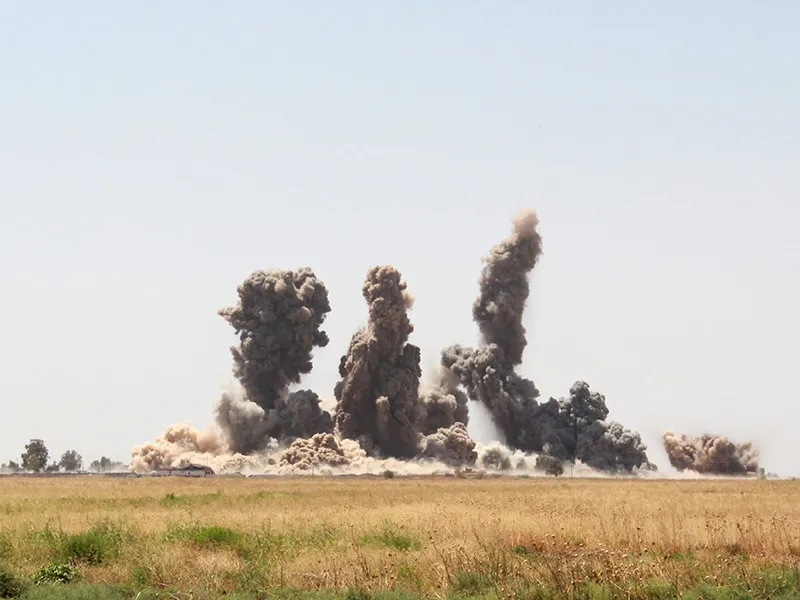By John Stapleton
New figures show Australian air strikes against Islamic State are on the increase.
Other aircraft, such as the C-17A Globemaster and the C-130J Hercules have delivered hundreds of tonnes of ammunition and mortar rounds and numerous aid packages to isolated civilians in dangerous territory.
Australia’s air-to-air refuelling specialist aircraft, the KC-30A, has been the busiest. It has flown 459sorties over 3635 hours, processing 37,142,111 lbs of fuel.
The E-7a aircraft, which provides an early warning and detection system has flown 160 sorties during 1946 hours of air time.
Since September 2014, F/A-18 fighters have conducted 998 combat zone sorties, clocking 7,652 flying hours and using 642 munitions units.
The Air Task Group (ATG) includes:
KC-30A multi-role tanker transport
1
E-7A Wedgetail airborne early warning and control aircraft
1
Royal Australian Air Force F/A-18 Hornets
6
Australia is conducting airborne combat and support operations over Syria and Iraq.
Australian combat aircraft launched 73 strikes against Islamic State forces in Syria last month, according to new figures released by the Australian Department of Defence. But the ADF is refusing to say how many lives the bombs claimed.
The figures also show that RAAF pilots made 998 sorties totalling 7648 hours of flying time over Iraq between September 2014, when Tony Abbott took Australia back to war, and November 2015. Of these sorties, 641 involved bomb drops.
Mr Abbott announced a week before he lost the Liberal leadership in mid-September this year that the Iraqi air campaign would be extended into Syria.
• Abbott defends Islam comments• The little known visa opportunity for Australians• Abbott’s attempts to ‘do a Rudd’ could leave him looking like Mark Latham
The updated ADF figures are bound to inflame the debate over Australia’s involvement in the two war-torn countries.
Clive Williams, Adjunct Professor at the Australian Defence Force Academy, said it had been foolish for Australia to get involved.
“Most people in strategic studies are saying the airstrikes won’t achieve anything in terms of a political outcome,” he told The New Daily. “There are a lot of negative aspects.”

Royal Australian Air Force F-18 Hornets have been deployed to Iraq and Syria. Photo: Getty
No official estimates of casualties are ever made public and the Australian government does not make available details on its specific targets. The only target information is released by US Central Command, with Australia’s involvement included in the larger Coalition tally.
The executive director of the Australia Defence Association, Neil James, defended the lack of public information.
He told The New Daily the spike in bomb drops in November could simply represent the ebb and flow of war: “Our type of target and the general rules of engagement are the only things the people need to know. We are fighting a war. Operational security considerations must have primacy. The representatives of the public, the politicians, are fully appraised.”
The volunteer group Iraq Body Count recorded 19 people killed in the IS-occupied city of Mosul in northern Iraq from coalition strikes on Monday. There is a fresh body count every day.
Despite specific questions from The New Daily, both Prime Minister Malcolm Turnbull and Defence Minister Marise Payne failed to provide an explanation for the increase in Australian bomb drops.
• Click the owl for a list of recent Coalition targets:
A Defence spokesman said the government did not release information on specific strikes because it could be misused by Islamic State to manufacture false claims and undermine the legitimacy of the Australian Defence Force.
Australian Air Task Group missions over Iraq and Syria, along with other coalition air operations, are coordinated through the US-led Combined Air and Space Operations which manages all air operations over Iraq and Syria.

Experts say air strikes alone will not be enough to stop Islamic State. Photo: Getty
“Defence will continue to provide information to the Australian media through routine operational updates provided by the Chief of Joint Operations and media releases that address significant events,” the spokesperson wrote.
No clear strategy
Critics argue that with no clear strategy, and hostage to American military interests rather than our own, the bomb drops are counterproductive and a considerable waste of money and resources.
On gaining office in Canada, new Prime Minister Justin Trudeau announced his country would be ceasing aerial bombardment. No such commitment came from Australia’s new Prime Minister.

Some experts say we’re repeating the mistakes made during the US-led invasion of Iraq in 2003. Photo: Gett
Former secretary to the Department of Defence Paul Barratt described Australia’s involvement in Iraq as insanity: repeating the same mistake and expecting a different result.
“The Americans have always been more relaxed about collateral damage than we are,” he said.
“We went through the whole of the Iraq War with the Americans saying we don’t count the bodies. I expect Australia is targeting munitions dumps, training camps, isolated targets that can do damage but not run the risk of civilian casualties.”
General information a bout the activities of the Air Task Group, including missions flown and munitions dropped is available at: http://www.defence.gov.au/Operations/Okra/ATG.asp
